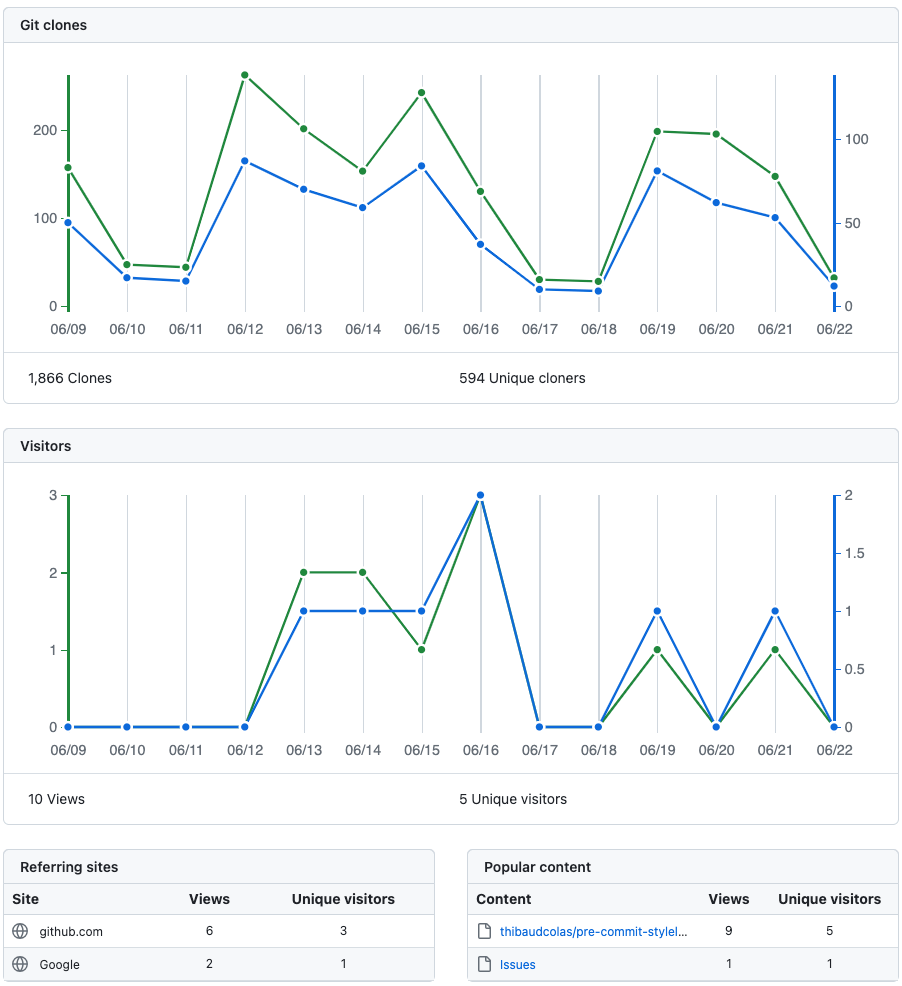About a year and a half after set up pre-commit-stylelint, I thought I’d quickly look into how well this mirror has been running.
TL;DR; from my perspective as a maintainer and user of this mirror, it’s working great and is better by all my personal measures than an equivalent install from the main project.
Maintenance
- It’s taken me about 1h of maintenance since initial setup. The main thing I did is writing this report, and adjusting the frequency of the mirroring script a couple times due to concerns with its energy usage.
- No one has opened any issues in the mirror repository. As far as I can tell no one has reported problems with the mirror elsewhere either.
Infrastructure
- The script takes on average 20s to run, and did so 3 times per week for the last 12+ months. So over that year and a bit that’s somewhere around 1h of run time.
- Since initial setup, the mirror has published 38 versions of Stylelint.
Here is a graph from GitHub which shows commits – i.e. when versions were published over the last few months:

Usage
- According to GitHub statistics, on average 42 people or CI builds use this mirror (clone the repository) per day
- On average there are 133 clones of the repository per day.
- According to the same stats, less than 1 person looks at the project in GitHub per day.
Here are the full statistics I have access to as of today:

Takeaway
Last year I compared the performance of installing ESLint via a mirror vs. the base repository. For that package, the mirror was about 8x faster (7s vs. a minute). If we used those numbers to assess how much processing the mirror has saved – that’d be a lower bound of 7s per use * 42 users per day * 365 days per year: 30 hours, vs. 255 hours if the same amount of usage had happened via installs of the repository directly.
Again this is mixing ESLint installation times with Stylelint usage figures, so not really correct by any means, but is a good indication the 1h the mirror runs per year is well worth the time and energy saved for everyone. If I calculate this again in the future I’ll also look at memory usage.